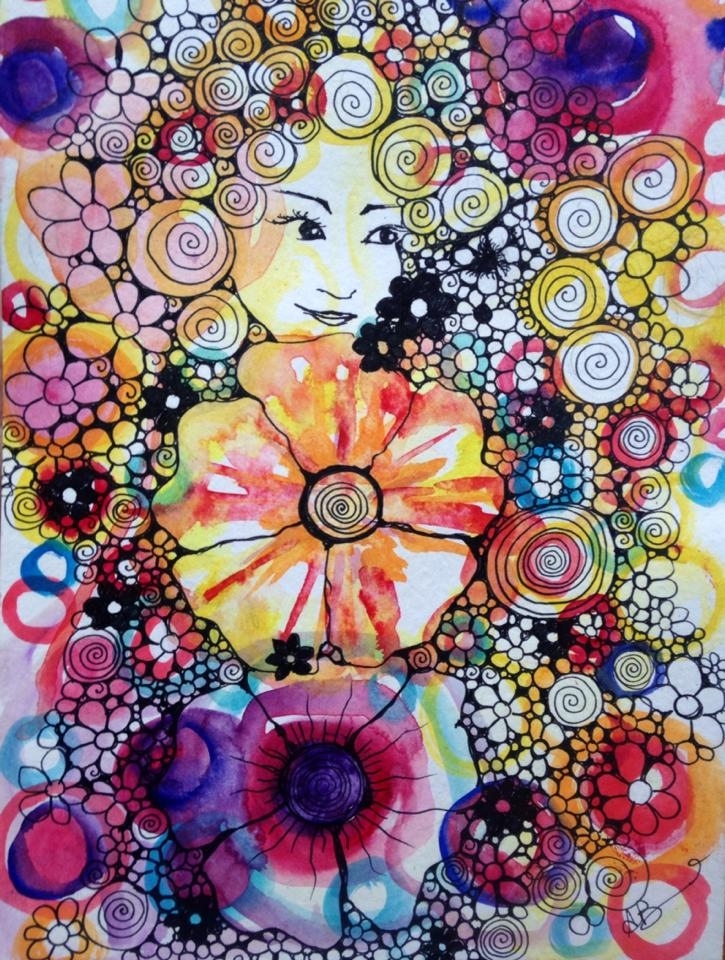
Reclaiming the Character Lilith–for a Young Audience
Yona Zeldis McDonough: What drew you to this subject of Lilith as the first woman, created at the same time as the first man, Adam, and before Eve?
Monette Chilson: The story of Lilith had a divine pull on me from the moment I heard it. I had always believed that a God of pure love would design humanity to live in harmony rather than hierarchy. Because I grew up in a church with a very repressive interpretation of scripture I could find no evidence of this belief. My spirit was drowning in dissonance. There was no reconciling what my heart knew to be true about God with the teachings I was hearing in church. But then I came across whispered bits of lore about little known strong women like Lilith and Sophia (the inspiration for my first book), and my heart leapt with hope. I recognized in Lilith a vital piece of the creation mythology that was missing for me. I wanted to reclaim this story for myself and for every woman who’s ever felt her gender made her less than a full participant in this world and its origins. By telling this story to children, we can begin building a generation who has fewer gaps in the archetypal understanding of what it means to be a woman and what it looks like to live fully in relationship with each other.
YZM: How did you come to your interpretation?
MC: I read everything out there on her, including a beautiful exploration called “The Lilith Question” written by Aviva Cantor Zuckoff for Lilith Magazine 40 years ago. Much of what I found—both in word and image—presents a demonized version of Lilith. The fact that such darkness surrounded her story made me even more determined to reclaim the legacy of the world’s first woman. And then, I put myself in her shoes. I imagined how I would feel if I’d been told by the only man on earth that I must submit or else. I think I would have chosen “or else,” like Lilith did. So I told her story as my story, your story, our mothers’, sisters’ and daughters’ story.
YZM: In what ways does it differ from traditional interpretations?
MC: Traditional interpretations all—to one degree or another—make Lilith a villain. At worst, she is presented as an actual demon. Best case, she is portrayed as selfishly trading her femininity for freedom. I chose to tell a story in which the heroine saved herself by refusing to sacrifice her humanity to another.
YZM: Who is your ideal reader?
MC: My ideal reader will be girl between the ages of eight and 12 who has heard of Eve, but never of Lilith. Introducing Lilith during this receptive, pre-teen age will allow the story to become part of the material she’ll use to form her sense of self during puberty and beyond. Girls are going to be naturally more drawn to the story than boys because they will see themselves mirrored in Lilith. I think boys need this story, too, though—for different reasons. Girls have been limited by the myth that they must be subservient to be feminine and boys by the myth that they must be dominant to be masculine. We need a new paradigm for both genders. And while this is a children’s book, I hope that we’ll have a strong secondary readership in women seeking to reclaim parts of themselves that have been lost to patriarchy.
YZM: What’s the connection between the text and the images?
MC: The illustrator, Arna Baartz, says, “It’s an intuitive connection. Colors, images and movement that merge well with the text were chosen. My art has a spiritual intention of love and healing which I hope translates to the reader.” I would add that one of the things that sets this book apart from many children’s picture books is the very open and organic visual interpretation of the main character. Unlike the pervasive princess archetype, where little girls want to look a certain way (like Cinderella, Ariel, etc.) to achieve a certain outcome (marrying the prince), this heroine’s looks morph throughout the book. Every little girl can see herself in one of the depictions. As Arna stated, the illustrations in this book were chosen for their intrinsic value—colors and movement—not for their ability to replicate the “look” of Lilith. I think they represent the feel of Lilith, and our girls need more opportunities to connect with their feelings over their appearance.
Yona Zeldis McDonough is the award-winning author of the seven novels and twenty-six books for children. She is also the editor of two essay collections and her short fiction, essays and articles have appeared in numerous national and literary magazines. Visit her atwww.yonazeldismcdonough.com or www.facebook.com/yzmcdonough.
The views and opinions expressed in this article are the author’s own and do not necessarily reflect those of Lilith Magazine.



